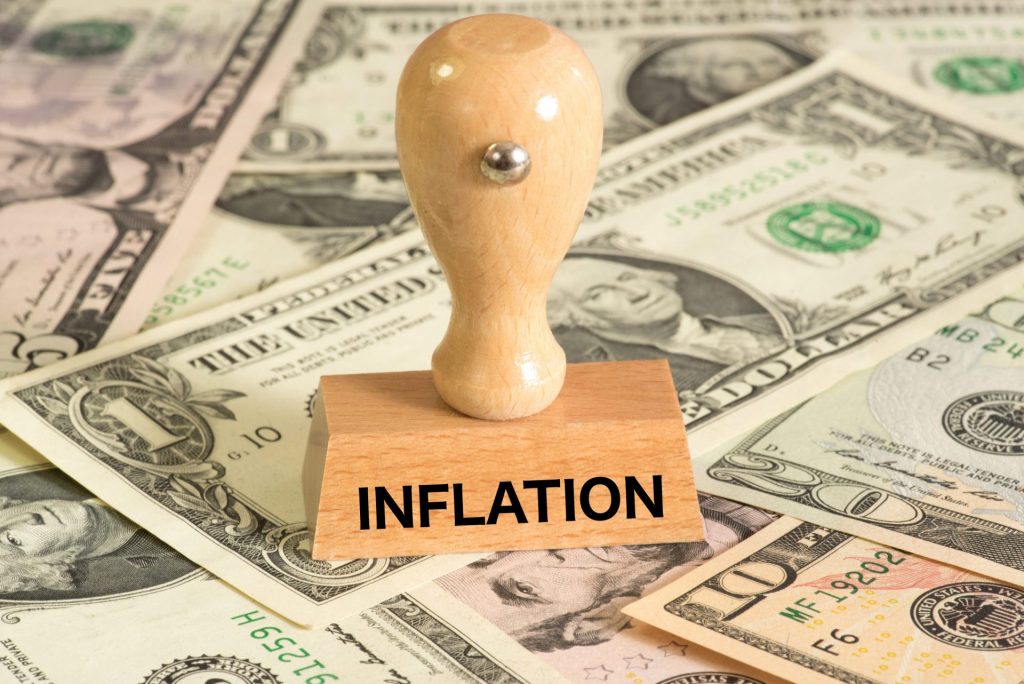
Inflation and You
I was reading my local newspaper this weekend and the headline was about a 10% hike in the water rates this year. Which made my brain cell stop and think, “Say what? Isn’t inflation under 2%“? In turn that made me question if the standard inflation numbers are even important to begin with. I decided that they aren’t – here’s why.
What is inflation anyway?
Inflation is the increase in prices over time; the better twin to its more evil deflation. Or another way of saying the same thing, is that Inflation is the decreased value of money. Like most things with the economy (a purely human system), it’s driven by human behavior; as the saying goes inflation is when there are too many dollars chasing too few goods.
If you’re interested in how the economy works, I found this video online which explains how the economy works and the inflationary / deflationary cycles. It’s 30 minutes long but worth watching and fairly entertaining too.
Inflation, when under control, is good since it means growth. Since 2012 the US government aims for a steady 2% rate. The best analogy I can think of is when cooking something in a pan of water; the water can’t get too hot since it gets more unstable eventually turning to steam, and it can’t get too cold. The US Federal Reserve tries to turn up the heat (reducing interest rates, printing money, etc) when the water’s too cool or turns down the heat (increasing interest rates etc) when it’s getting too hot.
As an aside, the term “printing money” is not that accurate. Money is continually printed; the real generation of new money in the US is by the Federal Reserve buying Government Bonds. When it does this, it credits the reserve account of the bank it purchased the bonds from, which creates money. Conversely when the Federal Reserve wants to reduce money, it sells Government Bonds and the money that banks pay for the bonds is essentially written off; thereby removing that amount from the economy. Sadly, you and I can’t buy bonds that way; it’s a special power of the Federal Reserve.
This affects me how?
Inflation, taken very broadly, means that your living expenses should increase by the inflation rate each per year. If inflation is 2% and you receive a salary increase of 3% in that year, then you’ve become more wealthy. It also means if you have money sitting around in a bank account earning 0% interest, then you’re becoming poorer since that money can purchase less.
This is why you may hear terms such as “inflation-adjusted returns” about investments; if an investment earns 4% in a year then its “real” gain is (say) 4% – inflation at 2% = 2%. Or you may come across “future money”, especially in retirement calculators trying to estimate how much money you’ll have in thirty years’ time. It’s not especially useful to know you’ll have $100,000 in thirty years’ time without an idea of how much you might be able to buy with that money.
How is inflation measured?
The inflation numbers that are widely reported are calculated by the Bureau of Labor and known as the Consumer Price Index. Each month, teams of people go out and determine the cost of a fixed list of items typically purchased by people. This is then compared to the value of that same list of items from previous months to determine the price increase (or decrease).
Here’s a chart taken from the book Stocks For The Long Run showing the change in price and the value of money from 1830 to 2012. Since 1955, the CPI index has only ever increased each year; largely as a result of the US abandoning the gold standard.
Currently the US inflation rate through the 12 months ending in April 2016 is 1.1%.
So if inflation is 1.1% a year, why did my water bill increase by 10%?
To be honest, I have no idea. Company A increased its price for providing water and Company B which provides the water to me, passed that increase onto me. Maybe Company A had been holding prices low for a while; maybe regulations changed, maybe it just wanted more money. This is really why I think you should just forget about the CPI values and make it more personal.

Looking at the CPI values is similar to an investor looking at the S&P Index increase and wondering why his / her own investment portfolio increased by a different amount. Since you don’t hold the same stocks in the same weight as the S&P index, you’ll get a different result which may be better or worse. Likewise as a consumer, I might consume products in different ratios / weights than the CPI measures them. I might not purchase any of a given commodity that significantly increased or decreased its price one year. This means that you essentially have your own personal inflation rate.
Your personal inflation rate
You can, if you were so inclined, even calculate your own personal inflation rate. Simply list out the things that you typically buy in a month and track their price changes over time. But to my mind (or at least my brain cell), this is missing the point.
Your cost of living can also increase due to lifestyle inflation where you decide to spend more, e.g. take more vacations or buy a new car. So calculating a number based on a fixed list of items, even if personal to you, isn’t that meaningful.
Generally speaking though, if (say) the price of milk increases, you usually have three choices
- Pay more and continue buying the same brand / quantity of milk
- Shop around for a cheaper brand / price (specials / coupons)
- Buy less milk
Options 2 and 3 are a thrifty vs frugal mindset in my view but both are just as valid and the choice may change from one product to another, especially if the product in question is a Need (can’t live without it where options 1 & 2 are more likely) or a Want (nice to have where options 2 & 3 are more viable).
Regardless, there are usually choices that can be made. I tend to approach this from a budgeting mindset; I have a fixed budget for each category of monthly expenses and the question / challenge that I make every 6 months is to review / justify the money allocated to each. Some increases I choose to accept (option 1), other categories I cut (option 3) and some I try to be more thrifty in keeping the amount the same (option 2).
My personal inflation rate
So putting that all together, I’m planning to increase my yearly budget by 2% each year irrespective of official inflation rates, unless of course something catastrophic happens.
This year my Budget 4.0 for 2016 is $3,900 / month. I’m going to keep it at that level when I update Budget 4.5 next month although there will be adjustments within each category. But come Budget 5.0 in 2017, I’ll increase it by 2%, rounded to a nice number (say $3,980).
An extra $80 per month next year is a total of $960, which at 3% yield requires $32,000 of investments. But when including dividend growth that’s typically more than 3% a year, plus new capital being added each month and possible salary increases / bonuses, I think it’s a reasonable increase that’s maintainable.
If inflation at that time is higher, then I’ll likely have to be more thrifty; but if inflation is lower then I’ll have a higher standard of living. Either way, having the three choices available (Accept, Thrift or Frugal) should provide enough flexibility to support it.
Quote of the day
Wealth is the ability to fully experience life.










